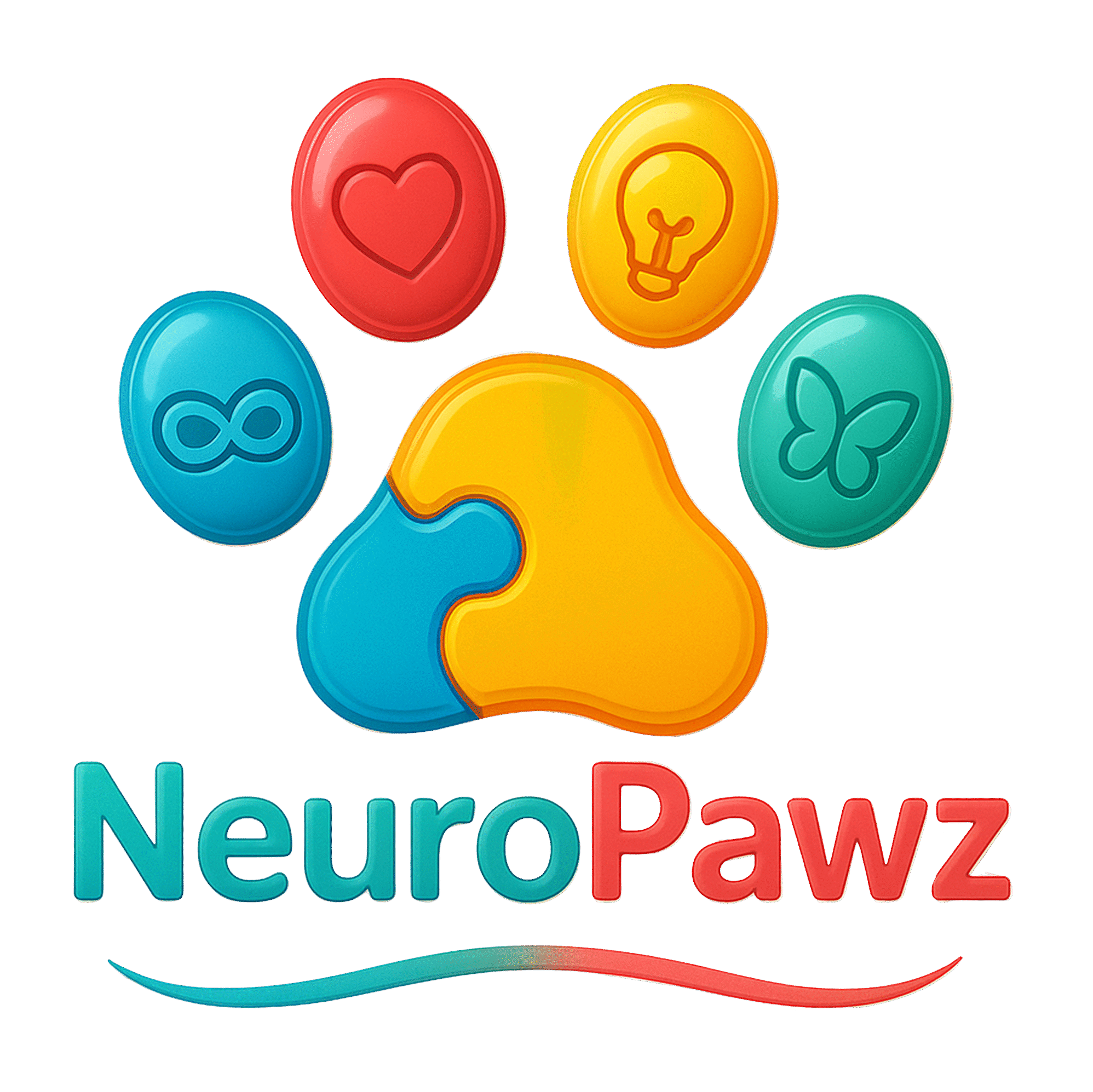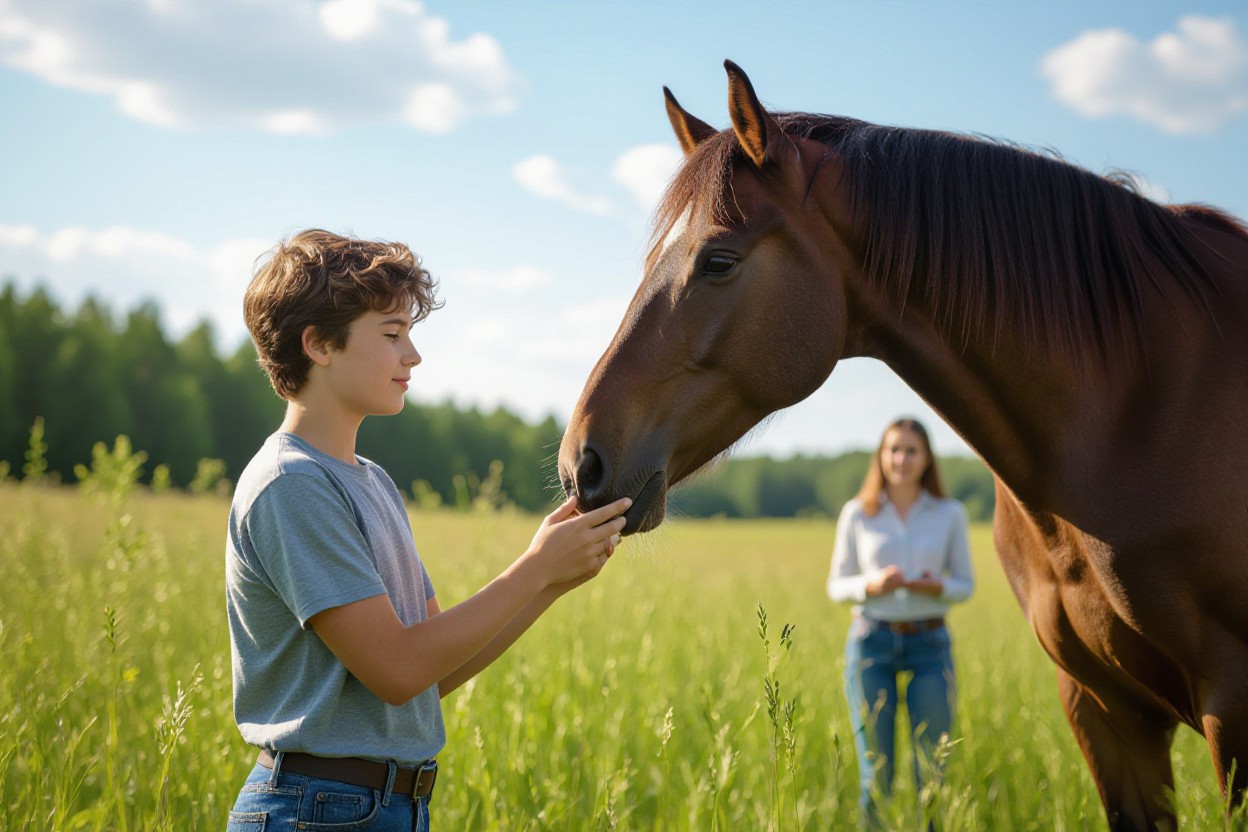Over time, you can experience measurable gains from equine therapy: improved sensory regulation, reduced anxiety and increased emotional awareness, and enhanced social communication and motor coordination that strengthen your daily functioning. You should be aware of risks such as falls, unpredictable animal behavior, and sensory overload, which skilled practitioners mitigate with tailored protocols. With professional oversight, equine programs can offer you a powerful, evidence-supported complement to other therapies.
Understanding Neurodivergence
You should understand neurodivergence as natural variation in brain wiring that affects learning, attention, sensory processing, and social interaction. Roughly 15–20% of people are estimated to be neurodivergent, including conditions like autism, ADHD, and dyslexia. In therapeutic settings, your profile will guide which interventions help—sensory-regulation work, structured routines, and social-skills practice are common targets.
Definition and Characteristics
You’ll find neurodivergence presents as differences in attention, executive function, sensory thresholds, and social reciprocity; strengths often accompany challenges. For example, you may show intense focus on interests, rapid pattern recognition, or creative thinking alongside variable sensory sensitivity or planning difficulties. Clinicians assess profiles across domains rather than a single label.
Common Neurodivergent Conditions
You should expect a mix of diagnoses: autism spectrum disorder (about 1 in 36 children), ADHD (affecting roughly 5–10% of youth), dyslexia (estimates vary 5–20%), and conditions like anxiety, tic disorders, or sensory processing differences. Manifestations vary by age and support; some of your behaviors reflect strengths, others create daily barriers.
Autism often presents with social-communication differences and sensory reactivity; in equine therapy you may practice turn-taking, joint attention, and sensory modulation beside a calm horse. ADHD typically shows inattention and impulsivity; structured mounted or groundwork activities can target sustained attention and self-regulation. Dyslexia mainly affects reading and phonological processing, but multisensory horse-related learning can boost confidence and engagement. Programs commonly run 30–60 minute sessions across 8–12 weeks; watch for sensory overload—loud barns or unpredictable animals can trigger anxiety, so screening and gradual exposure matter.

Overview of Equine Therapy
You’ll find equine therapy implemented across clinical clinics, schools, and veteran centers to target sensory, social, and motor goals. Programs pair licensed clinicians with certified equine specialists and follow structured protocols; dozens of studies and program reports document gains in emotional regulation and engagement. Expect session lengths typically from 30–90 minutes, once or twice weekly. Note the tradeoff: substantial therapeutic benefit when well-run, but also risks from falls, allergies, and animal unpredictability, so strict safety measures are required.
What is Equine Therapy?
Equine therapy uses horse-related activities to address neurological, behavioral, and physical challenges; you may encounter terms like equine-assisted psychotherapy (EAP), hippotherapy, and therapeutic riding. Clinicians integrate the horse’s movement and social feedback to work on sensory integration, attachment, motor planning, and communication. Programs are typically co-led by a mental health professional and a trained equine specialist, with individualized goals and outcome measures tied to your functional needs.
Methods and Techniques Used
You’ll see a blend of mounted and unmounted techniques: grooming and groundwork for sensory regulation and trust, riding for core strength and bilateral coordination, and obstacle courses to practice executive function and problem-solving. Therapists commonly use validated tools such as the Social Responsiveness Scale or behavior checklists to track progress, and sessions are adapted to individual sensory thresholds and safety needs with helmets and trained handlers present.
For further detail, grooming sessions target tactile modulation and sequencing, groundwork enforces boundary-setting and nonverbal communication, and mounted interventions exploit the horse’s three-dimensional, gait-derived movement to improve pelvic alignment and postural control. Case programs often combine 8–12 weeks of twice-weekly sessions with measurable goals—improvements typically noted in attention span, social initiation, and motor planning—while maintaining strict safety protocols to mitigate falls and animal-related hazards.
Benefits of Equine Therapy for Neurodivergent Individuals
You can experience layered gains from equine work: structured sessions (typically 30–60 minutes, 8–12 weeks) combine sensory input, social routines, and motor challenge to produce measurable changes such as reduced anxiety, improved sensory regulation, and enhanced engagement. Programs often track outcomes with baseline and post measures—parent and therapist ratings commonly show meaningful improvements in mood and attention within 6–12 sessions.
Emotional Benefits
You often find the horse’s steady rhythm and nonjudgmental presence lower physiological arousal; studies and clinic reports note decreases in cortisol and self-reported anxiety after repeated sessions. Through grooming, riding, and quiet time you build coping strategies, and improved self-regulation appears within weeks for many participants, though short-term overstimulation can occur without paced introductions.
Social and Communication Skills
You develop pragmatic skills through task-based interactions—leading, grooming, and feeding require turn-taking, eye contact, and clear requests. Group lessons create natural opportunities for peer modeling; therapists structure prompts so you practice initiating and responding, which translates into stronger everyday social exchanges.
You can see concrete examples quickly: in clinic programs using 10–12 weekly sessions, therapists report that a majority of participants increase spontaneous social initiations and pragmatic language use during and after lessons. For instance, one program documented multiple adolescents moving from prompted requests to 3–5 spontaneous peer-initiations per session, driven by consistent role-play, visual supports, and graded fading of prompts.
Physical and Therapeutic Advantages
You gain core strength, balance, and postural control from the horse’s three-dimensional movement, which mimics human gait and forces continuous micro-adjustments. Occupational and physical therapists use this to target gross motor goals; sessions of 30–45 minutes across several weeks often show measurable improvements in balance tests and functional mobility.
You should expect targeted outcomes: improved trunk endurance, better gait symmetry, and increased coordination are common clinical goals. Therapists document progress with standardized tools (e.g., Berg Balance Scale, timed up-and-go) and combine riding with therapeutic exercises. Pay attention to safety—use of helmets, a trained therapeutic team, and clear emergency procedures reduces the risk of falls and other hazards while maximizing the functional gains you can achieve.
Success Stories and Case Studies
You can see measurable change: in a community program (n=64) equine therapy participants with neurodivergent profiles showed a 46% average reduction in caregiver-reported anxiety and a 78% increase in social initiation over 12 weeks, with 85% of families noting sustained gains at 6 months. These outcomes highlight both immediate and longer-term positives you can expect when therapy is structured and data-tracked.
- 1) Clinic A (n=20, ages 8–16, ASD): after 10 weeks, mean Social Responsiveness Scale scores improved by +12 points; 70% of participants progressed from non-verbal initiation to initiating peers in at least one setting.
- 2) Program B (n=15, adolescents, ADHD): ADHD Rating Scale scores fell by 34% at 8 weeks, with sustained medication reduction in 4 cases and improved classroom attendance by an average of 2.3 days/month.
- 3) Residential Pilot (n=12, mixed diagnoses): sensory dysregulation episodes decreased from a median of 6/week to 1/week after individualized horse-handling protocols across 6 weeks.
- 4) Adult Transition Study (n=17, ages 18–26): executive function tasks improved by 22%, leading 5 participants to obtain part-time employment within 3 months of program completion.
- 5) Trauma-Informed Track (n=10): panic-attack frequency dropped by 60% and cortisol sampling showed a mean decrease of 18% pre-to-post session across an 8-week cycle.
Personal Anecdotes
You hear parents describe small, definitive moments: a child who previously avoided eye contact now mirrors a horse’s neck-stretch and sustains a 10-second social glance, or a young adult who gains the confidence to complete a stable task independently, translating that skill to daily living. Those narrative shifts often correspond with the numeric improvements you just reviewed, reinforcing how equine therapy creates practical, observable change.
Research Findings
You’ll find pilot studies and program evaluations reporting statistically significant improvements in social engagement, sensory regulation, and anxiety measures; pooled program reports often cite effect sizes in the small-to-moderate range (Cohen’s d ≈ 0.3–0.6) across 6–12 week interventions, with larger gains in individualized protocols.
Going deeper, randomized or controlled data remain limited but promising: in controlled comparisons (n totals per study typically 30–80), interventions that combined mounted and groundwork sessions produced more robust outcomes—social scores improved by an average of 10–15% over groundwork-only groups. You should note variability tied to session frequency (2×/week showed greater retention than 1×/week) and coach training level; programs using standardized outcome measures (SRS, BASC, cortisol sampling) provided the most reliable evidence you can use to assess program quality before enrolling.
Implementing Equine Therapy Programs
When you implement a program, plan a phased rollout: start with a 12-week pilot, secure funding (grants, school contracts, sliding-fee models), and set measurable goals tied to standardized tools. Partnering with local schools or clinics often cuts costs and increases referrals. Expect initial investments for facility upgrades and horse care; many small programs begin with 1–3 therapy horses and a minimum of two trained staff to run safe, effective sessions.
Program Structure and Requirements
Design sessions to match needs: individual 30–60 minute sessions for high-support clients and group sessions of 2–4 for social goals. Maintain a staff-to-client ratio of at least 1:1 for intensive cases and 1:3 for groups, with a licensed clinician (OT/PT/SLP) overseeing therapeutic goals. Implement formal safety protocols—helmets, emergency plans, routine equine veterinary checks—and secure liability insurance and written consent for all participants.
Finding Qualified Providers
Vet providers by verifying certifications like PATH Intl. or EAGALA and confirming a licensed clinician is on-site for therapy goals. Over 800 PATH Intl. centers exist in the U.S., giving you options to compare programs. Ask about staff background checks, continuing education, insurance, and sample treatment plans before contracting services; insist on seeing outcome measurement approaches and onsite observations.
Dig deeper by requesting case studies, pre/post data using tools such as the SRS-2, Vineland, or Goal Attainment Scaling, and client references. Ask to observe 1–2 live sessions and review horse welfare records and staff CE hours (many programs expect 12–20 hours/year). Prioritize providers who supply written progress reports tied to specific, measurable objectives and who integrate licensed therapists when you plan to bill or seek school-based placement.
Challenges and Considerations
Potential Limitations
Access often limits impact: many rural areas lack programs and waitlists at specialized centers can run several months. Costs range widely, with private sessions commonly $60–$150 per hour, so insurance coverage matters. Sensory overload from tack, smells, or noisy barns can trigger distress for some; you may need gradual exposure or alternative activities. For example, one community program shifted to ground-based exercises after 4 of 20 participants preferred non-riding modalities, yet still saw measurable gains in regulation.
Safety Measures
Require helmet use, certified instructors (PATH Intl. or similar), and horse temperament assessments before sessions; recommended ratios are often 1:1 for higher-support needs or 1:3 for mild support. Staff should conduct pre-session health checks, screen for allergies, and maintain written emergency protocols. You should expect signed consent, baseline functional goals, and clear behavioral plans to reduce risk and maximize benefit.
Further precautions include desensitization protocols when sensory sensitivity is present, stepwise exposure plans lasting 4–12 weeks for many participants, and routine equipment inspections. Programs often document incidents and run quarterly safety drills; trained staff and individualized mounting/dismounting supports lower injury risk, while communication aids (visual schedules, AAC) help you stay engaged and safe during each session.
Final Words
On the whole, equine therapy can enhance your sensory regulation, social skills, emotional insight, and executive functioning by providing consistent routines, multisensory feedback, and nonverbal communication with horses. You can build confidence, reduce anxiety, and practice adaptive behaviors in a safe, motivating environment with measurable progress. When integrated into individualized plans and guided by trained professionals, this approach becomes a powerful, complementary tool for supporting neurodivergent strengths and growth.

